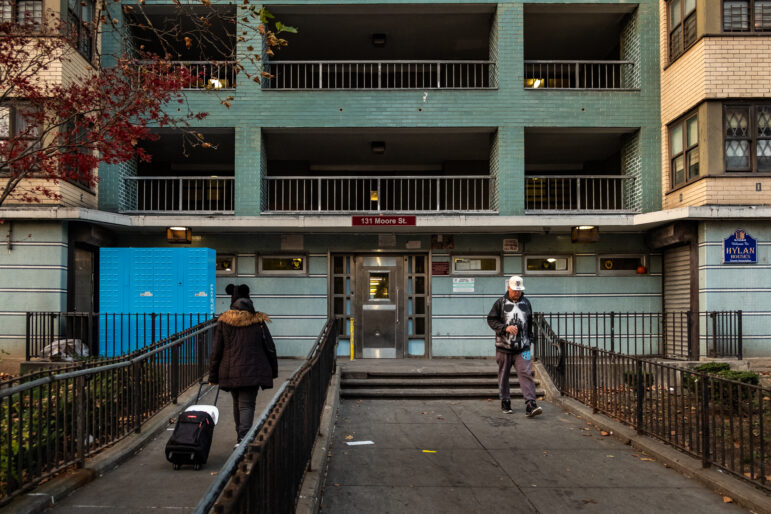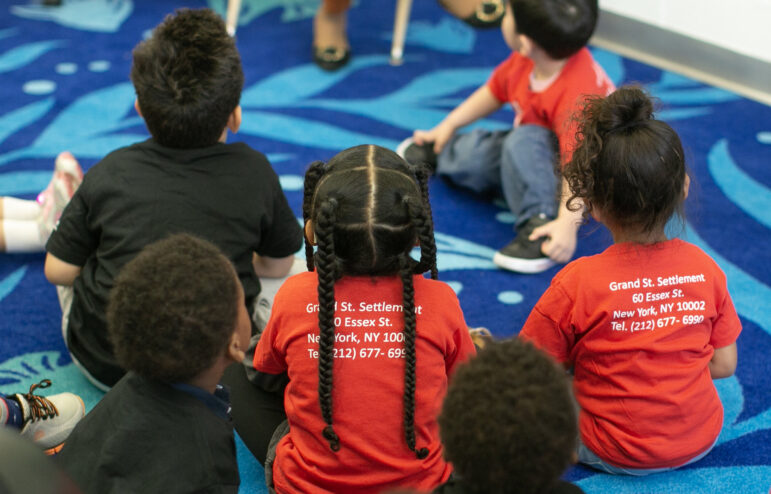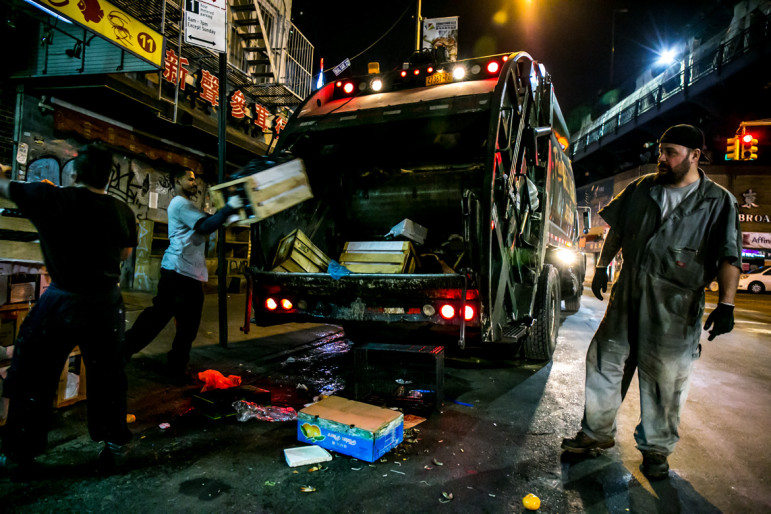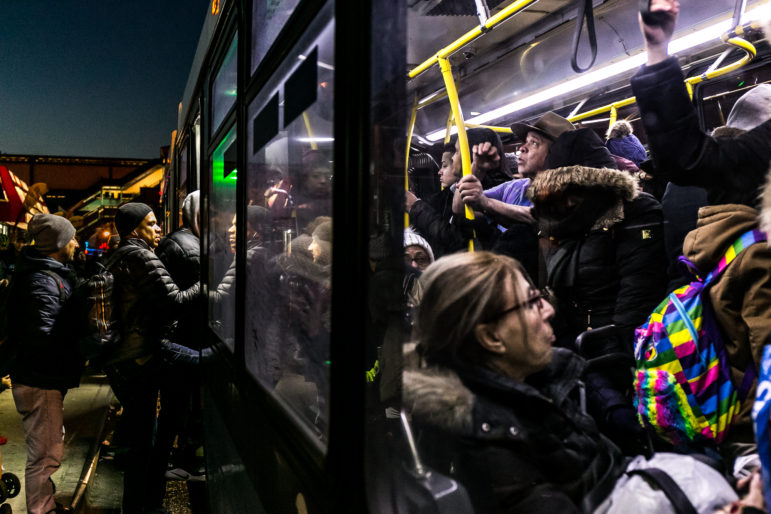
From a city presentation on the Southern Boulevard study.
Una versión en español de este artículo está aquí.
* * *
From President Obama’s farewell and Donald Trump’s inauguration to North Korea’s missile plans and Germany’s looming election, national and international stories dominate our collective anticipation for what 2017 will hold. But this will also be a newsworthy year for the New York City neighborhoods that have been targeted for a rezoning as part of the mayor’s plan to build and preserve 200,000 units of affordable housing.
Here’s a rundown of the potential rezoning neighborhoods, their current status, and what we’ll be watching for this coming year.
East New York — The City Council approved the De Blasio administration’s rezoning proposal for this neighborhood last April after securing promises of a variety of community benefits. Nine months later, the city has begun planning for a new community center and a new school, has opened up a Workforce1 Career Center, and is seeking a developer to build rent-restricted housing on public land. Meanwhile, neighborhood groups are reporting an increase in harassment and are campaigning for stronger anti-displacement mechanisms.
The de Blasio administration said it was unlikely that the low-income neighborhood would see any market-rate development for several years. We’ll be watching to see how fast the market heats up and whether any housing—affordable or otherwise—comes online.
Flushing — It would have been the second rezoning proposal to come up for a vote, but local elected officials and the de Blasio administration put the kibosh on the plan, citing a variety of infrastructure concerns and technical challenges.
Instead of pursuing a rezoning, the city is expected to release a report in April that will offer suggestions as to how future private developers in the area can enhance the accessibility of the Flushing Creek waterfront. We’ll be watching for that report, as well as to see how the city responds to advocates’ calls for more affordable housing and infrastructure investments.
Bay Street — Since July, the city has been preparing a Draft Environmental Impact Statement (DEIS), a document that will analyze the potential environmental impacts of this rezoning proposal for northeast Staten Island. Councilmember Debi Rose’s office expects that DEIS to be released in the next few months, followed immediately by the launch of the Uniform Land Use Review Procedure (ULURP), the seven-month public review process that culminates in a City Council vote on the proposal.
We’re waiting to read that DEIS to see the projected impacts of the proposal on local infrastructure, open space and displacement. In addition, we’ll be watching to see if community groups—some calling for more deeply affordable housing, others for more open space—have had any impact on the Economic Development Corporation’s plans for several parcels of public land in the area.
Far Rockaway – The rezoning process in this neighborhood is moving forward rapidly. The city began preparing a DEIS in October, but Councilmember Donovan Richard’s office expects it will be released and ULURP launched by the end of January. In September we noticed significant community support for commercial redevelopment of the area, but some concern about the addition of new housing units, about how the city would use public land in the area, and about the city’s potential to use eminent domain to acquire some parcels.
We’ll be waiting to hear community reactions to the forthcoming DEIS and following the saga of the abandoned shopping center owned by the infamous landlord Rita Stark, who died in October. There are signs her estate may be finally cooperating to facilitate development.
Jerome Avenue – The city began preparing a DEIS for this western Bronx rezoning proposal in November, and stakeholders expect it to be released, and the ULURP process launched, sometime this spring.
We’re awaiting that DEIS to see if the city heeds the demands of the Coalition for Community Advancement for a more in-depth environmental review process, one that takes into account the potential for tenant harassment to lead to secondary displacement. The Coalition has also demanded the city change its proposal to protect auto-businesses and ensure any new housing is affordable to existing residents and leads to new jobs. Members of the local community boards, however, would like to see more middle-income housing.
East Harlem – After a heated hearing in December, DCP has begun preparing a DEIS for its East Harlem rezoning proposal. In the meantime, groups that were involved in the crafting of their own plan for the area want to hear how all the other aspects of their plan—including recommendations on schools, open space, NYCHA, housing preservation, and more—will be addressed by the city.
We’ll also be waiting to hear which firms the city selects to develop housing on the public lot at 111th street, and to see the ultimate proposal for the planned African Burial Ground memorial and mixed-use project.
Inwood – The rezoning study launched by the Economic Development Corporation (EDC) and Councilman Ydanis Rodriguez has been moving slowly. EDC has yet to release a draft scope of work, a detailed description of the proposal that must be issued before an agency prepares a DEIS. Some credit the slow-down to loud community opposition against a private development application over the summer. A representative for EDC said “we’re continuing our discussions with Councilmember Rodriquez and other stakeholders, and we expect to have more updates in the coming months.”
Gowanus – Building off the community planning process lead by Councilmember Brad Lander, DCP kicked off its own rezoning study of the neighborhood in the fall. More public meetings will be held this spring, and community stakeholders will form working groups to discuss specific topics.
We’ll be waiting to learn about the administration’s efforts to create a new mandatory mixed-use zoning tool to help preserve industry in Gowanus and elsewhere. And will some of the anti-displacement legislation supported by tenant activists in Gowanus and other neighborhoods make it through City Council this year?
Chinatown – Last summer, after rejecting calls for the city to adopt a grassroots rezoning plan for all of Chinatown and the Lower East Side, DCP offered instead to conduct a rezoning study limited to Chinatown. In December, the community board voted to embrace the opportunity for more dialogue.
We’ll be watching to see how DCP defines the borders of their Chinatown study and whether this study, or the special environmental review process underway in Two Bridges, addresses community concerns about gentrification and displacement in the larger Lower East Side.
Bushwick – A steering committee of local stakeholders has been conducting a a community planning process that is considering a wide range of topics, from affordable housing construction and preservation to infrastructure and economic development.
A public meeting in February will focus on the merits or drawbacks of rezoning some of the neighborhood’s commercial corridors to allow more housing growth.
Long Island City – In 2015, DCP informed local organizations about a rezoning study of the neighborhood, but the agency has still not held a real public meeting, and has had very few engagements with stakeholders since then. Meanwhile, local groups have begun crafting their own demands for a potential rezoning.
DCP says the study is still active, however, and that it’s working to develop tools to encourage mixed-use buildings with commercial and light-manufacturing spaces. Public meeting times will be announced in the next few weeks.
Southern Boulevard – In October, DCP invited a group of South Bronx neighborhood organizations to participate in a planning process for the neighborhood. DCP officials say this study will build off of decades of grassroots planning efforts in the area, but some stakeholders are concerned a rezoning could also invite displacement.
DCP will be hosting a first public meeting on the study early in the new year.









2 thoughts on “Where Mayor de Blasio’s Rezoning Proposals Stand”
What other neighborhoods will be included in future rezonings?
Token and sad efforts for rezonings. The displacements of established communities will continue because population growth still greatly exceeds new supply.